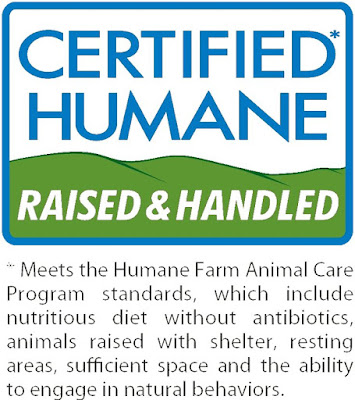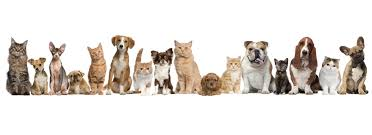Animal Welfare & Animal Cruelty - The Emerging Challenge for Poultry Sector
Animal Welfare and Poultry Production System – What should we do to address this?
By:
Vijay Sardana
Indian poultry sector will go through many challenges in coming days, it should gear up to face the new challenges. It is the time to have a clear strategy in place of corporate-level strategy for long-term sustainability.
In coming days consumers will ask the questions about Animal welfare, is Indian poultry industry ready to answer the consumers with evidence, when imported products will flow into Indian markets with the following labels?
Nowadays animal welfare is an issued on which society is concerned. In-humane handling of livestock and other living creature is also becoming a matter of concern among various stakeholders in society.
Purpose of this article is to explore the meaning of animal welfare from various angles including the codes of practice, industry standards, legislation and science, and hopes to avoid the more emotive and ethical arguments advocated by others.
Animal Welfare and Poultry Industry:
Animal welfare is becoming an increasingly important aspect of the business of producing poultry meat or eggs. This is in part being driven by:
· Consumers - who are demanding greater welfare standards to minimize cruelty in livestock system
· Supermarkets and retailers - who typically respond to consumer trends, and
· Animal activists - who have their own agendas and emotional connect with animals’ welfare.
In modern society, irrespective of the reason, animal welfare should be viewed as equally important as any of the other elements of poultry production. To ensure the proper enforcement, authorities are including animal welfare dimensions into recommendations for poultry farmers.
Poultry Production Systems needs relook:
All forms of poultry farming like barn or free-range are inherently an intensive form of farming with varying degree. Now the issue is:
What exactly is the essential component of animal welfare?
How can growers and/or owners of commercial poultry businesses determine what the boundaries of animal welfare are? This becomes more complex because the carer of the birds is, in most integration business cases, not the owner of the birds.
So, who is responsible for what?
Where will the lines be drawn in the event of an adverse animal welfare investigation and subsequent prosecution?
What is the actual concern: Animal Welfare or Animal Cruelty?
It is important to draw a distinction between animal welfare and animal cruelty.
Animal welfare has a vastly different meaning depending on who you talk to. For example, an animal activist is likely to have a significantly different view about animal welfare than a regular customer of the local chicken. Farmers and consumer industry will try to define the same in a different manner.
Animal cruelty, on the other hand, is a much narrower issue and is more clearly defined and described in the legislation.
So, what is Animal Welfare:
Essentially, animal welfare from a poultry perspective means that the basic needs of the birds are being met on a day to day basis. These needs are:
1.Nutrition - Food and water are readily accessible
2.Comfort - Freedom to move, stand, turn around, stretch, sit and lie down
3.Visual Contact - Birds can see each other (visual contact with other members of the species)
4.Proper Housing - which protects birds from the weather and which doesn’t harm or distress the birds.
5.Health and Safety - Prevention of disease, injury, and vice. If animals are diseased or injured, or there are outbreaks of feather pecking or cannibalism, they must be treated or managed as quickly as possible.
“Five Freedoms” recommended for Animal Welfare:
The Model Code of Practice for the Welfare of Domestic Poultry says, an animal’s welfare should be considered in terms of 'Five Freedoms', which give us the boundaries with which to assess animal welfare together with the steps and compromises necessary to safeguard and improve welfare within an effective livestock industry. The five freedoms are:
1.Freedom from hunger and thirst: by ready access to fresh water and a diet to maintain full health and vigor.
2. Freedom from discomfort: by providing an appropriate environment including shelter and a comfortable resting area.
3.Freedom from pain, injury or disease: by prevention through rapid diagnosis and treatment.
4. Freedom to express normal behavior: by providing sufficient space, proper facilities, and company of the animal’s own kind.
5.Freedom from fear and distress: by ensuring conditions and treatment which avoid mental suffering.
In addition to the basic needs and the Five Freedoms, various government and industry codes of practice and standards provide further detail and spell out guidelines which stipulate recommended maximum stocking densities, light duration, and intensity shed environment (humidity and temperature) and litter condition.
From the above, one can see that the five basic needs and the Five Freedoms are in line with each other but with some notable differences.
Can we enforce these guidelines verbatim?
The question is which of the above guides, i.e. the basic needs of poultry versus the Five Freedoms, is enforceable.
The answer is neither. The above are guidelines and are not enforceable in their own right in absolute terms, but these may be used in evidence as part of an investigation and subsequent animal welfare prosecution if required.
What is Enforceable?
Prevention of Cruelty to Animals Law will govern these issues. Essentially, the basis of any prosecution will depend on offenses relating to the Prevention of Cruelty to Animals (PCA) Act.
In seeking to prosecute a case, a regulatory agency will seek evidence that offenses have been committed under PCA Act. While the codes of practice, industry standards, and other guidelines are not strictly enforceable, they may be used as part of a brief of evidence to support a case against a grower or a processor.
On the other hand, if a grower and processor can demonstrate that they have abided by industry standards, codes of practice and other industry and government accepted guidelines, then this may be used as a defense against any prosecution.
What is Meant by Animal Cruelty?
Animal cruelty is defined as instances where animals are unreasonable, unnecessarily or unjustifiably:
· beaten, kicked, killed, wounded, pinioned, mutilated, maimed, abused, tormented, tortured, terrified or infuriated
· over-loaded, over-worked, over-driven, over-ridden or over-used
· exposed to excessive heat or excessive cold, or
· inflicted with pain (suffering and distress)
According to the Act, a person in charge of the animal must also:
· exercise reasonable care, control or supervision of an animal to prevent the commission of an act of cruelty upon the animal
· where the pain is being inflicted upon the animal, take such reasonable steps as are necessary to alleviate the pain, or
· where it is necessary for the animal to be provided with veterinary treatment, whether or not over a period of time, to provide it with that treatment.
The Act also defines aggravated cruelty as instances which result in:
· the death, deformity or serious disablement of the animal, or
· the animal is so severely injured, so diseased or in such a physical condition that it is cruel to keep it alive.
The Act also requires a person in charge of the animals to provide the animals with food, drink or shelter, unless an adequate reason exists not to do so, for example, just prior to pick-up or if under veterinary instruction.
Growers or Processors? Who is Responsible for the Welfare of the Birds?
Both growers and processors, as owners of the birds, have a responsibility for their welfare. The act clearly specifies that the person in charge of the animal/birds includes both the processor as well as the grower.
Growers may rightly state that they do not control stocking densities, pick-ups or the target weights of the birds. How can they be held responsible for their welfare if processors do not pick them up early enough or do not pick up enough birds to ensure densities remain within the guidelines?
The author's advice to growers is to ensure that:
1.Growers should read, understand and comply with the relevant law.
2.Growers should keep accurate records to demonstrate that they have complied with the Standards and Codes.
3.Growers should communicate with their integrator or processor or sponsor any concerns they may have about animal welfare, including stocking densities, lameness, leg deformities, excessive mortalities or any other issue related to the health and welfare of the birds
4.Growers should keep records of their communication with their processor.
Integrators must review their contracts to include Animal welfare clauses and provide suitable compensation to farmers for proper implementation. This should be audited by their teams.
As precaution and evidence: For this reason, concerns should be communicated in writing and held on file to ensure growers can provide evidence of the communication if required to do so.
The way forward:
· Animal welfare means different things to different people.
· From a growers perspective, how can we figure out what are acceptable animal welfare practices, and when or if we need to alert someone if we have any concerns?
· A good starting point would be for growers to become familiar with the applicable Animal Welfare Standards or Guidelines.
· The Standards outline what the expectations of industry are, and provide tools and templates for growers to record and demonstrate that they are doing as much as they can to comply with their animal welfare obligations.
·Finally, growers are strongly encouraged to communicate and record any issues or concerns they have with their processors.
This ensures that, if required, the processor can provide appropriate advice or take appropriate action to address any welfare concerns. It also ensures that the grower can demonstrate their duty of care to the birds should an animal welfare audit or investigation be conducted on their farms.
Do send your questions or legal clarifications to: sardana.vijay@gmail.com




Great Blog
ReplyDeleteContract Packing